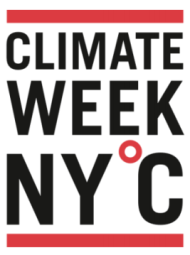On January 28, FEMA released updated flood maps for parts of Queens, Brooklyn, Staten Island, New Jersey, and Westchester County. The updated maps will help New York officials determine the best policies for re-building in the wake of Hurricane Sandy. But the maps do not account for future effects of climate change, such as sea level rise and storm intensification, and therefore may be too conservative to provide adequate protection.
The new maps cover a much larger area and twice as many structures as the latest version created in 1986: an additional 35,000 structures are identified as being at risk. New maps for Manhattan and the Bronx, to be released later this month, are expected to add to this number. Some of this increase in coverage is due to sea level rise New York has experienced in the past 30 years, but most of the change is due to improvements in modeling methods, computer equipment, and scientists’ understanding of ocean physics.
Even with this additional coverage, the flood zones identified by FEMA are much smaller than the area that was actually flooded by Hurricane Sandy. Specifically, the storm submerged large areas of Queens, Brooklyn, Staten Island, and New Jersey that are not included in FEMA’s new flood zones.
Even more importantly, the flood maps do not consider effects of future sea level rise. According to the 2013 Draft National Climate Assessment Report, global sea levels are projected to rise 1 to 4 feet by 2100, and sea level rise in the northeast region is expected to exceed the global average by roughly 4 inches (Ch 16: Northeast). With higher sea levels, if another storm like Hurricane Sandy struck New York, storm surge would affect a much larger area than is currently predicted by the FEMA maps.
FEMA officials who spoke on background to InsideClimate News said future sea level rise wasn’t included because the agency has traditionally used historical storm information to determine where flood zones should be set.
In July 2012, President Obama signed the Biggert-Waters Flood Insurance Reform Act into law, which requires FEMA to consider using the “best available science regarding future changes in sea levels, precipitation, and intensity of hurricanes” in its flood zone maps. But the New York City FEMA maps were exempt from the new law because their development had been under way since 2010.
The flood maps are particularly important during the post-Sandy re-building process as New York officials will use the maps to set insurance requirements and building code modifications. If the New York maps are too conservative, property owners may risk losing their investments by rebuilding in especially vulnerable areas or by adapting structures to meet standards that will have to be revised in a few years.
This would be a particularly severe problem if New York has to wait another 30 years for the next update to its flood zone maps. Dan Watson, a spokesperson for FEMA, told InsideClimate News that the agency plans to update its flood maps across the country roughly every five years from now on. “In 2003, FEMA began receiving a regular appropriation to both modernize and update the science behind flood insurance rate maps,” he said. “The continued funding allows us to maintain the mapping of flood risk as a top priority.”
And in these future flood maps, according to the Reform Act, FEMA will at least have to consider incorporating future climate impacts. Whether or not that is too late for New York remains to be seen.



